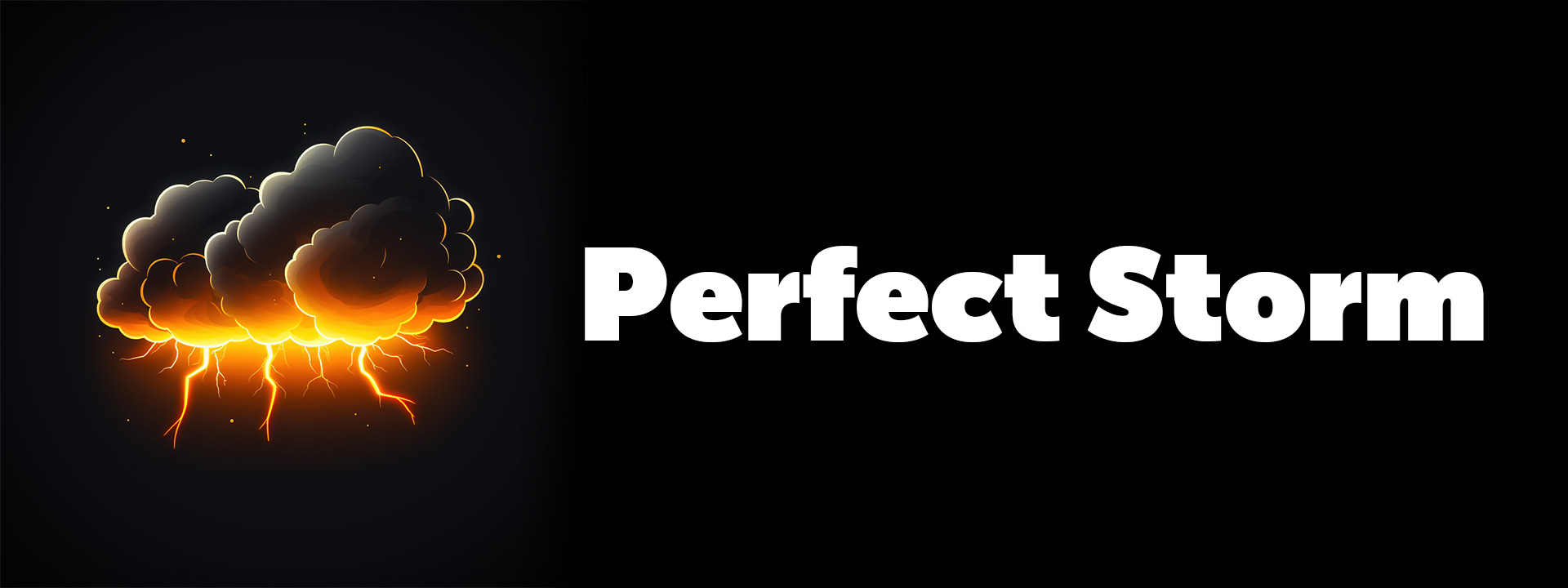Ah, the cover letter—a single sheet of paper that feels like the only barrier between you and your dream job. It’s a piece of the job application puzzle that can elicit feelings of dread, confusion, and self-doubt. We get it. We’ve all been there, feeling that weight of expectation, hoping to find the right words. But take a deep breath. Let’s journey through this together. We’ve crafted a blueprint to help you construct the perfect cover letter, one that not only represents your best self but also speaks directly to the hearts of hiring managers.
Your cover letter is your beacon in the vast sea of job applications. It’s more than just a formality; it’s your personal story your professional journey. A strong cover letter can elevate your resume and give voice to your personality. Step by step, let’s dive into the nuances of crafting that perfect cover letter.
Table of Contents
1. Understand the Purpose of a Cover Letter
Let’s take a step back before putting pen to paper (or fingers to keyboard). Why are cover letters so vital? It’s your chance to connect the dots with the hiring manager, to tell a cohesive story of who you are and why you’re the right fit.
Your resume offers the facts and milestones. But the cover letter? It provides the context, the narrative. It’s your space to share your passion, drive, and motivation. So, remember: this isn’t just a formality. It’s your introduction, your virtual handshake.
2. Start with a Captivating Opening
In a world filled with noise and constant distractions, first impressions truly matter. When a hiring manager opens your cover letter, you have mere seconds to grab their attention and make them want to read on. That initial impact comes from your opening lines.
Why a Unique Opening Matters
Hiring managers often complain about seeing the same repetitive and uninspiring openings in cover letters. Phrases like “I am writing to express my interest in…” have been overused to the point of becoming background noise. Understandably, when you’re scanning through dozens—if not hundreds—of applications, it’s the unique ones that pop.
Crafting Your Perfect Hook
Consider your own experiences. Why are you passionate about this role? What about the company excites you? Maybe you’ve been a long-time admirer of their work, or perhaps you had a meaningful experience related to the job’s core function.
For instance, if you’re applying for a position at an environmental organization, you might begin with, “During a backpacking trip through the Amazon rainforest, I witnessed firsthand the devastating effects of deforestation. This experience solidified my commitment to environmental conservation, and it’s why I’m drawn to [Company’s Name] and its mission to…”
Such personal anecdotes resonate because they’re genuine, memorable, and showcase your motivation.
3. Address the Right Person
No one likes to feel like just another face in the crowd, and addressing your cover letter to a generic recipient can make it feel just that way. Making your letter more personal by addressing it to the appropriate individual can set you apart from the pile of other applications.
The Power of Personalization
By specifically addressing the hiring manager or recruiter, you’re conveying several things:
- Diligence: You’ve taken the extra step to research and find the right person.
- Personal Touch: It indicates that you view this opportunity as unique, not just another application you’re sending out.
- Professionalism: Demonstrates a keen attention to detail which is invaluable in any role.
Finding the Right Name
So how do you determine whom to address? Here are a few strategies:
- Company Website: Many organizations list key personnel or department heads.
- LinkedIn: This platform can be a goldmine. Search for the company, and then filter results by job titles like ‘Hiring Manager’, ‘Recruiter’, or relevant department heads.
- Phone or Email Inquiry: If online methods fail, there’s no harm in calling the company’s HR department to ask.
If after all these efforts you still can’t find a name, opt for something slightly more specific like “Dear Hiring Team at [Company’s Name]” or “Dear [Job Role] Recruitment Team”. These still show effort and are preferable to the faceless “To whom it may concern.”
Remember, the goal is to make a human connection, even before the interview. Personalization can be a simple yet powerful step in that direction.
4. Structure: The Four-Part Formula
Here’s a comforting thought: there’s a proven structure to crafting your cover letter. Imagine building a house. You wouldn’t start with the roof, right? Similarly, your cover letter has a logical flow:
- Introduction: Mention the role, and perhaps share a bit about what excites you about the company or role.
- Body, Part 1: Dive into your qualifications. This is your moment to shine, so don’t be shy about your achievements.
- Body, Part 2: Share why the company’s mission resonates with you. This showcases that you’re not just looking for any job, but this job.
- Conclusion: Tie it all together. Express your enthusiasm and hope for a future conversation.
5. Match Your Tone with the Company’s Culture
The Rhythm of Corporate Culture
Every organization dances to its own tune, and understanding this rhythm is paramount when approaching them. Some might be boisterous and lively, others reserved and meticulous. Aligning your communication to this beat is a subtle but impactful way to show you can fit right in.

Research and Reflect
To truly grasp a company’s ethos:
- Dive Deep into their Digital Footprint: Websites, blogs, and especially their social media channels can provide a wealth of insights. How do they communicate? What’s the underlying energy in their posts?
- Engage with Current or Past Employees: Platforms like LinkedIn make this easier than ever. A simple chat can offer you a sneak peek into the company’s daily life.
- Participate in Their Public Events: Webinars, seminars, or even social gatherings can be enlightening.
Once you’ve soaked in the essence of the company, infuse your cover letter with that same energy. If they’re playful, let a bit of that playfulness echo in your words. If they’re strictly professional, ensure your letter mirrors that level of precision and formality.
6. Tailor for Different Roles
Celebrating Uniqueness in Every Application
Like snowflakes, no two jobs are identical. It’s a disservice to yourself and the hiring manager to regurgitate a generic letter for each application. Tailoring is the art of celebrating what makes each role unique and showcasing how your own uniqueness fits right into it.
Crafting a Custom Fit
Consider these steps to tailor effectively:
- Deep Dive into the Job Description: Beyond the obvious role requirements, what’s the underlying message? Maybe they’re looking for innovation or perhaps a strong team player.
- Reflect on Relevant Experiences: For each unique job requirement, think about experiences or achievements that resonate with that specific need.
- Highlight Transferrable Skills: Especially when switching industries or roles, underscore skills that, though acquired elsewhere, are perfectly suited for this new position.
Each tailored cover letter becomes a testament to how much you value the role, as it shows you took the time to craft a unique narrative for it.
7. Highlight Key Achievements
The Spotlight of Success
Your cover letter is the stage, and this is your solo. While the audience (the hiring manager) might appreciate a humble background dancer, what they’re truly looking for is a star who can shine brightly and elevate the entire performance.
Quantify and Qualify Your Achievements
Follow these steps to ensure your achievements are both impressive and relevant:
- Be Specific with Numbers: Instead of saying “I increased sales,” try “I spearheaded a campaign that boosted sales by 20% in the first quarter.”
- Provide Context: Numbers are impressive, but they resonate more when there’s a story. Why was this achievement significant? How did it impact the broader team or company goals?
- Relate it to the Role: Make sure to highlight achievements that have the most relevance to the job you’re applying for. It’s all about creating a narrative where you’re the missing piece to their puzzle.
Celebrate your wins. In the grand play of job applications, your achievements are your most rousing act, providing a tangible glimpse of your potential contributions to prospective employers.
8. Avoid Common Mistakes
The Small Errors That Speak Volumes
Errors in a cover letter, whether they be typos or lapses in judgment, can be the pebble that diverts the stream of opportunities. Your cover letter might be the first impression you make on a potential employer, and it’s crucial that this impression remains pristine.
Proofing Beyond the Obvious
Here’s how to avoid the most common pitfalls:
- Typos and Grammar: Use tools like Grammarly, or have a friend or mentor review your letter. Sometimes, a fresh set of eyes can catch what you might have overlooked.
- Generic Phrases: Phrases like “I believe I’m the best candidate” can be empty without substantiation. Instead, demonstrate why you believe you’re the best fit through specific experiences or achievements.
- Being Overly Lengthy: While it’s crucial to highlight your strengths, being concise is a strength in itself. A cover letter shouldn’t be an exhaustive autobiography. Make every sentence count.
- Negativity or Apologies: Never highlight what you don’t have or apologize for perceived weaknesses. Focus on your strengths and what you bring to the table.
By meticulously fine-tuning these aspects, you ensure that your cover letter radiates professionalism and attention to detail, resonating deeply with the hiring manager’s expectations.
9. End Your Perfect Cover Letter on a Positive and Proactive Note
The Lasting Echo of Your Words
Your cover letter’s conclusion isn’t just a formality; it’s the crescendo, the final note that lingers in the mind of the reader. This is your chance to leave a mark, to ensure that the hiring manager feels both your passion and your potential.
Crafting an Unforgettable Farewell
To end with impact:
- Express Genuine Enthusiasm: Let them feel your excitement about the role. Phrases like “I am deeply excited about the possibility of contributing to…” can showcase genuine interest.
- A Call to Continued Dialogue: Express your desire for further discussion. “I look forward to potentially discussing how I can add value to your team” showcases proactivity.
- Gratitude: Never underestimate the power of a simple thank you. Appreciate the time they took to review your application. A gesture of gratitude can set you apart in a sea of applicants.
In the symphony of your perfect cover letter, the ending should feel like a soaring climax, leaving the hiring manager with an indelible sense of your potential and eagerness to contribute.
Conclusion
Crafting the perfect cover letter might feel like scaling a mountain, but remember, every step every word is an opportunity to share your story. By following this blueprint, not only will you present your best professional self, but you’ll also infuse your essence into every line. You’re not alone on this journey. We’re cheering for you every step of the way. Here’s to brave beginnings and new career horizons! 🌟

